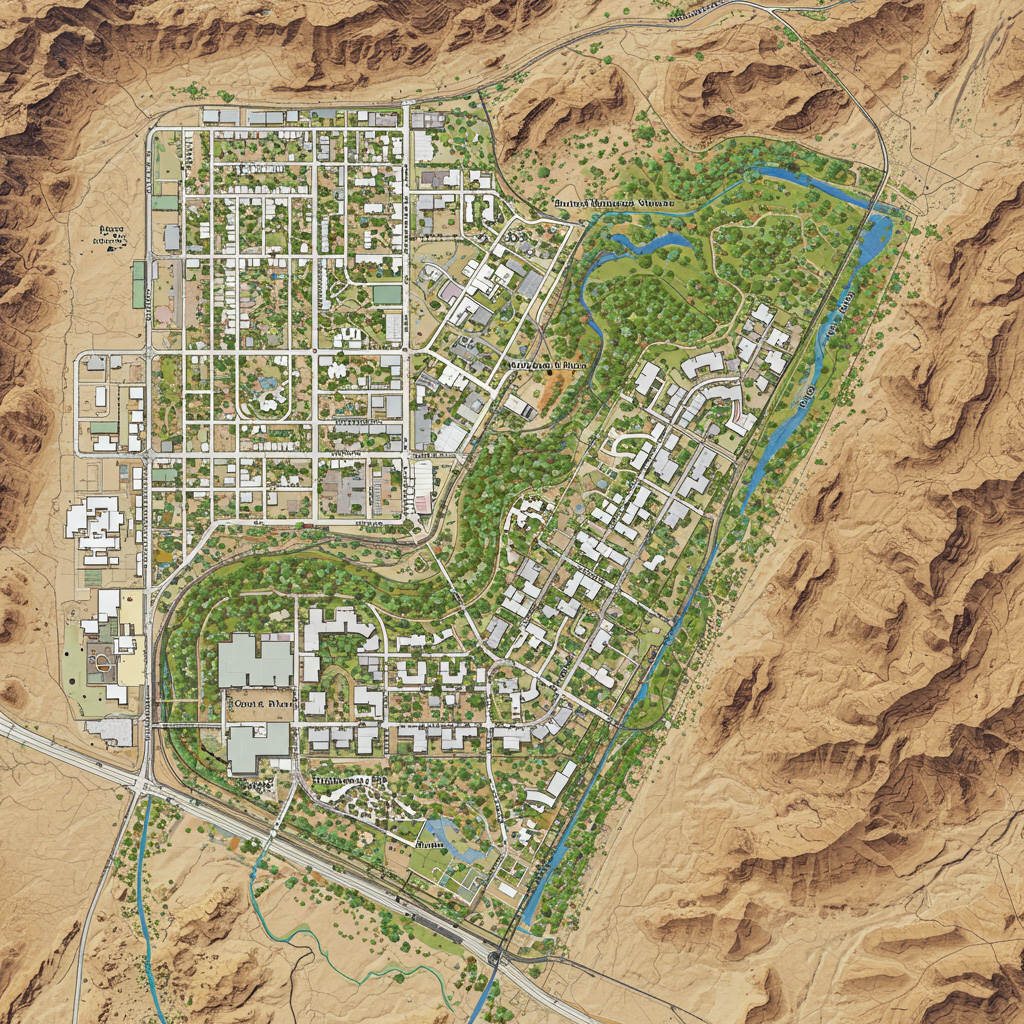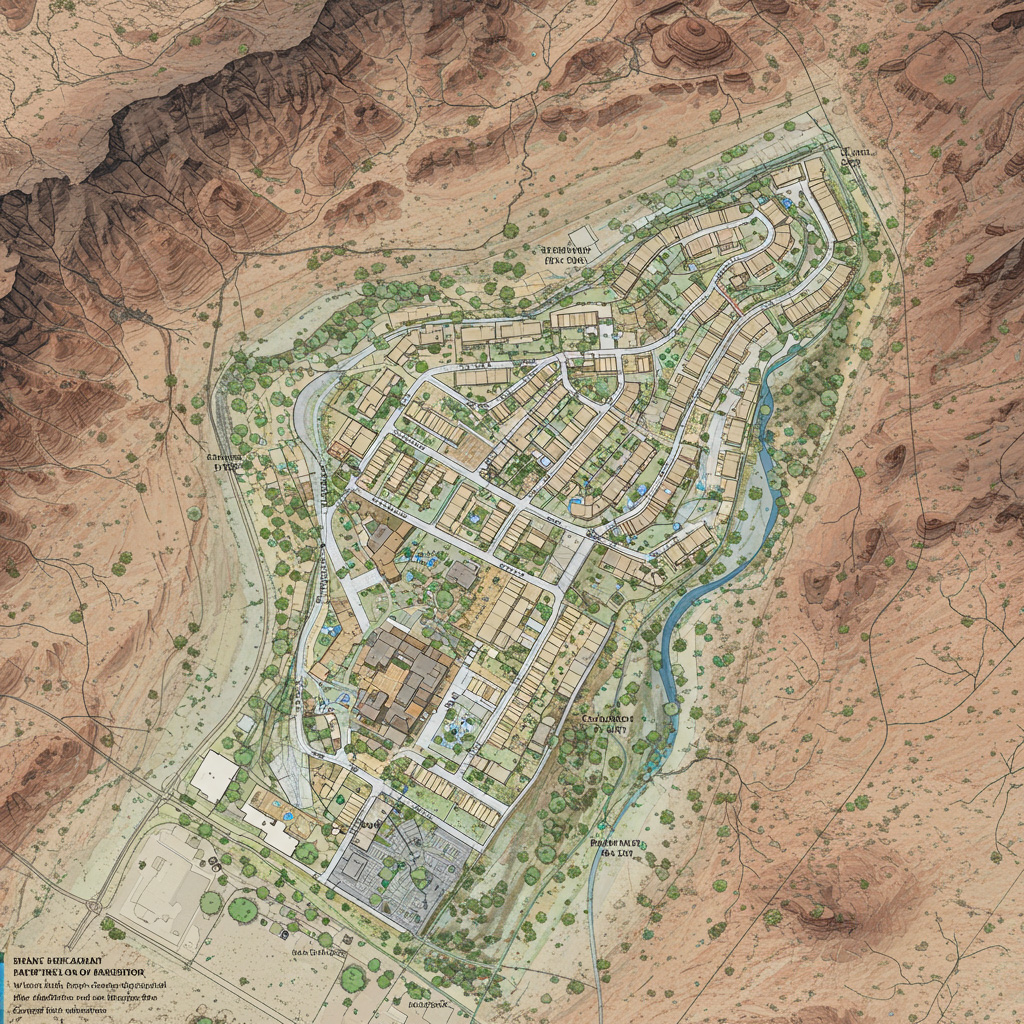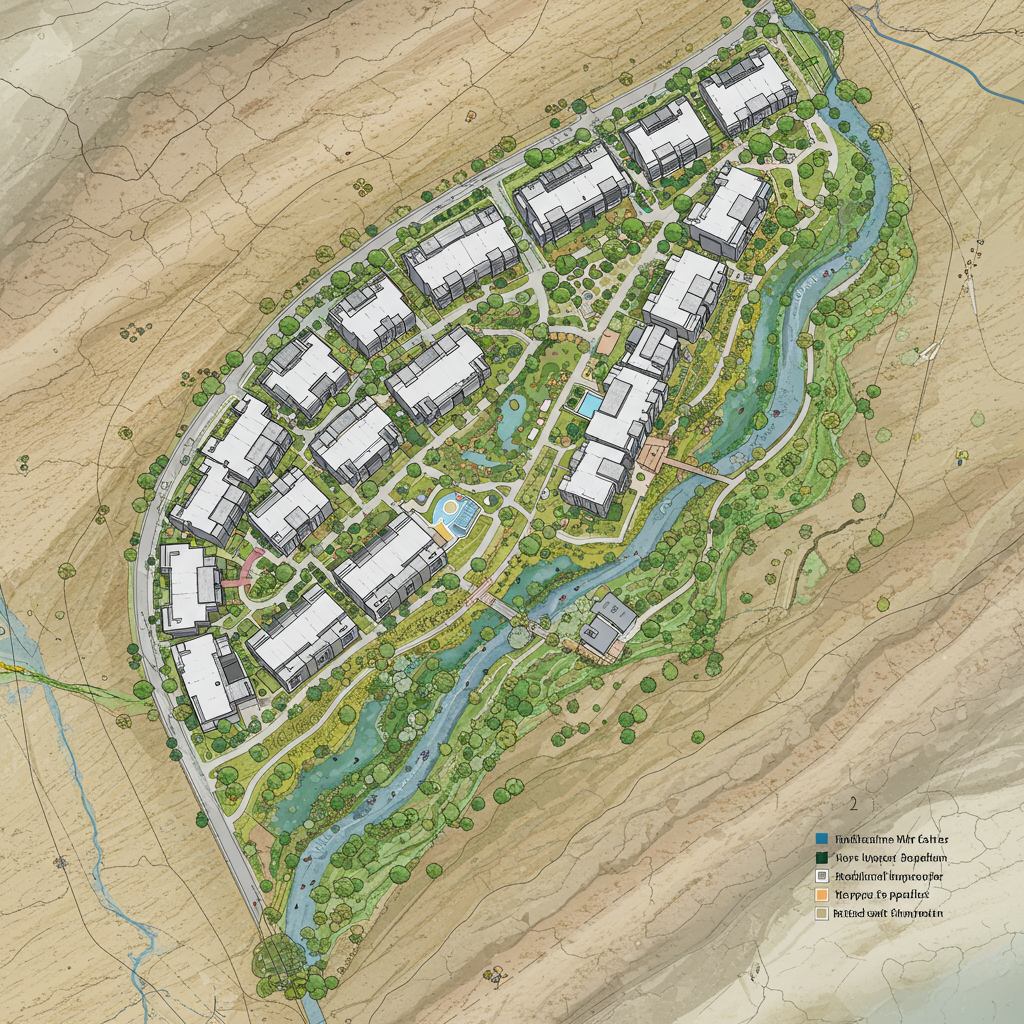

Planning and Development
Michael McElroy
Planning and Development Homepage
Director of Planning and Development
Michael McElroy
Contact Information
Office of Public Works
800 E Overland, Suite 200
El Paso, Texas 79901
Phone: (915) 273-3330
Monday-Friday
8:00 am - 5:00 pm
Useful Links
Road Cut Permit
Driveway Permit
Property Donations
Reporting a Street Light Out EPE
GIS Enterprise
Go-Post
FAQs
View Frequently Asked Questions
Links to Municipalities
City of El Paso
City of Socorro
City of Horizon
City of San Elizario
Town of Anthony
Town of Clint
Village of Vinton
Links to Agencies
LID SITE PLANNING PRACTICES
Low Impact Development (LID) site planning practices focus on preventing excess stormwater runoff at the source rather than addressing it after development occurs. This contrasts with structural Green Infrastructure (GI) practices, which are often used as retrofits or mitigation measures. While structural GI elements remain important in the final phases of development, LID site planning begins at the earliest stages to minimize runoff from the outset.
Key objectives of LID site planning include:
Site Analysis
A comprehensive site analysis is the foundation of LID planning. Understanding the natural features of a site early in the process leads to a more efficient design and prevents unnecessary environmental and financial costs. Each site is unique, and a thorough assessment avoids imposing a rigid design that disregards local characteristics.
Key attributes to assess include:
Conservation Opportunities
The most effective conservation efforts occur at the earliest planning stages, such as rezoning or block platting. Understanding regional watershed dynamics helps integrate site-level planning with broader environmental goals. Watershed management studies provide insight into connectivity and stormwater infiltration opportunities, particularly in arid regions where preserving existing drainage patterns is crucial.
When possible, LID strategies should align with broader community design objectives. At a minimum, they should incorporate regional watershed influences into the site plan to enhance environmental resilience.
Key Design Features
To maximize LID effectiveness, site design should incorporate:
Site-Specific Design
Once a site’s ecological and hydrological characteristics are understood, their influence on the development should be carefully assessed. For example, if two areas contain native vegetation but only one can be preserved, choosing the one that maintains connectivity within a larger wildlife corridor will have a greater ecological benefit.
Set-aside areas should be clearly marked on construction plans, and road networks should follow natural drainage patterns. Designed swales can serve as both stormwater conveyance systems and wildlife corridors, as well as provide recreational and aesthetic benefits. Addressing these considerations early prevents costly changes later.
Traditional developments often replace natural channels with rigid concrete infrastructure, leading to habitat loss and increased runoff. Instead, parks and green spaces can be positioned at the end of drainage corridors to enhance LID benefits.
Strategic placement of buildings and infrastructure can optimize stormwater management. Placing elements that generate runoff (such as roofs and sidewalks) at higher elevations allows gravity to direct flow toward landscaped infiltration areas. Curved vegetated swales slow water, promote infiltration, and improve water quality before it exits the site.
Compact building design also contributes to LID goals. A two-story structure can cut building footprint in half compared to a single-story alternative, preserving more permeable land area. Structural GI elements, such as permeable pavement and green roofs, should be incorporated into the initial design rather than added later as retrofits.
Unique Opportunities
Some sites contain previously disturbed areas that provide ideal locations for new development, reducing the need for further environmental disruption. These areas can also be restored to enhance wildlife corridors, improve floodplain function, or create community amenities.
For roadway projects, LID opportunities may be limited by right-of-way constraints, but reductions in impervious surface can still be achieved. In some cases, planned road widths can be reduced if master plans are outdated. Using vegetated swales instead of curb-and-gutter designs allows for natural infiltration and decreases the need for expensive drainage infrastructure.
Benefits of LID Site Planning
LID practices often produce overlapping benefits. For example, directing runoff through vegetated swales into a preserved natural area achieves multiple objectives:
Considerations During Construction
Pre-construction meetings with developers, contractors, and local officials ensure LID principles are understood and followed. Training sessions for all workers should emphasize the importance of preserving sensitive areas and outline prohibited activities. Providing illustrated guides can help reinforce these practices and ensure continued adherence throughout the project.
By integrating LID practices from the earliest planning stages through construction, developments can achieve long-term sustainability while reducing environmental and economic costs. These strategies are particularly valuable in arid regions, where preserving natural drainage systems and minimizing water loss are critical for resilience.